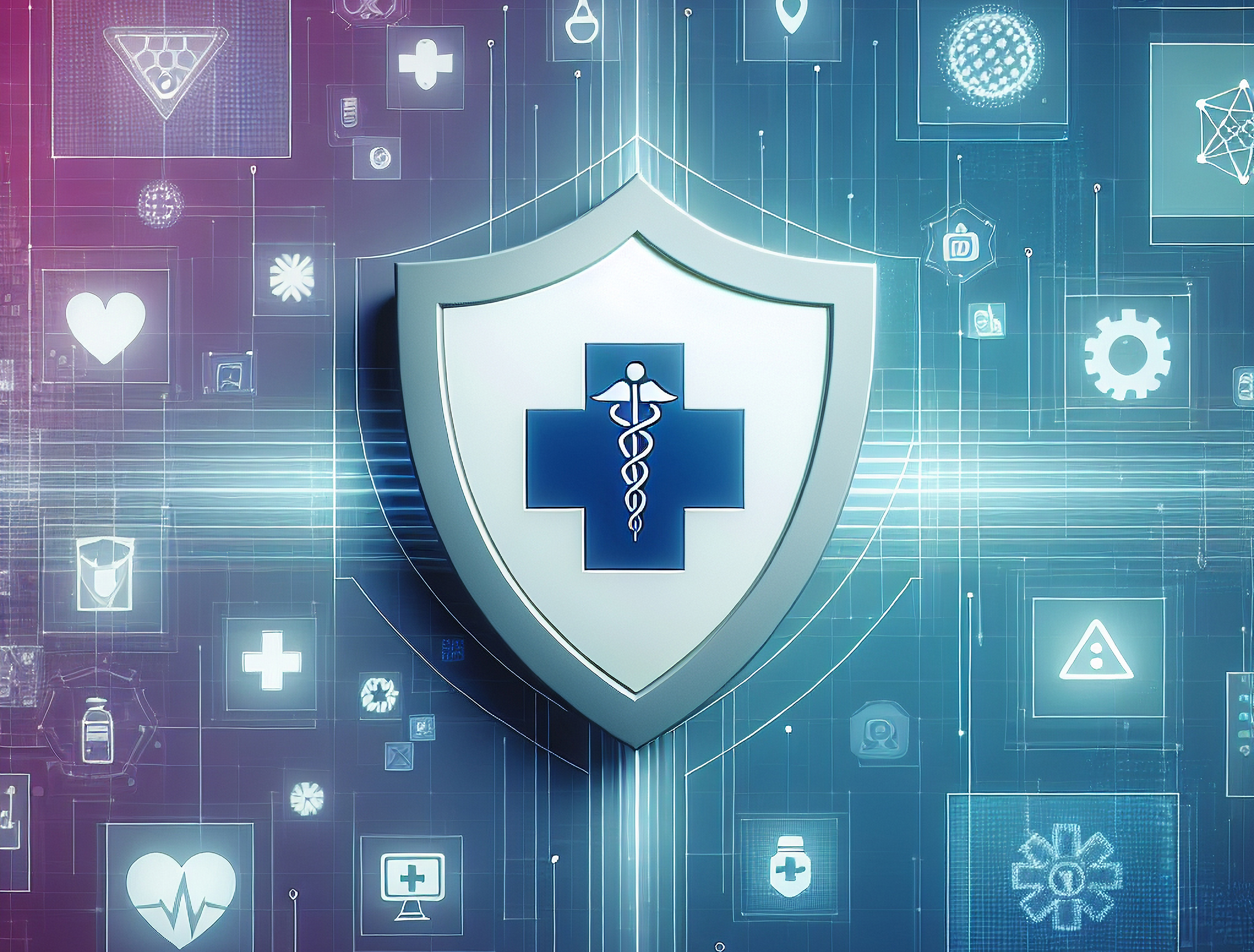In today’s digital age, cybersecurity has become a critical concern across all sectors, with the healthcare industry being one of the most targeted by cyber threats. As healthcare organizations increasingly rely on digital systems to manage patient data, operations, and critical processes, the risk of cyber-attacks grows exponentially. This challenge becomes even more pronounced during project recovery, where the urgency to get back on track can sometimes overshadow the importance of robust security measures.
The Growing Cybersecurity Threat in Healthcare
Recent data shows a sharp increase in cyber-attacks on healthcare organizations. According to the 2023 HIMSS Cybersecurity Survey, 61% of healthcare organizations reported significant security incidents in the past year. The healthcare sector is particularly vulnerable due to the high value of personal health information (PHI), which can fetch up to 50 times more than financial data on the black market. These statistics underscore the need for rigorous cybersecurity practices, especially during the recovery phase of IT projects.
The Intersection of Cybersecurity and Project Recovery
Project recovery is the process of bringing troubled projects back on track, which often involves realigning objectives, reassessing resources, and implementing corrective actions. During this phase, IT projects are particularly vulnerable to cyber threats due to several factors:
- Increased Attention:
Recovering projects attract heightened attention from both internal and external stakeholders, including cybercriminals who exploit perceived vulnerabilities.- Internal Stakeholders: Internal stakeholders such as project managers, team members, and executives are intensely focused on the recovery process. This heightened focus often results in increased communication and data exchange, which can inadvertently create additional entry points for cyber threats.
- External Stakeholders: External stakeholders, including clients and partners, may also demand more updates and access to project information. This extended access can be exploited by cybercriminals, who are adept at phishing, social engineering, and other tactics to breach systems during these periods of heightened activity.
- Cybercriminals: Cybercriminals are particularly adept at identifying and exploiting times of vulnerability. The urgency and chaos that often accompany project recovery make it an opportune time for them to strike. They may target the project with sophisticated attacks, such as ransomware or advanced persistent threats (APTs), aiming to disrupt operations further and extract sensitive data.
- Mitigation Strategy: To counteract this, organizations should implement strict access controls, ensuring that only authorized personnel have access to sensitive information. Regular monitoring and real-time threat detection systems can help identify and mitigate potential threats quickly.
- System Changes:
Recovery efforts often involve significant changes to systems and processes, which can introduce new security gaps.- Software and Hardware Updates: Recovery may necessitate updating or replacing outdated software and hardware components. Each change, while necessary for bringing the project back on track, can introduce new vulnerabilities. For instance, newly installed systems might not be fully configured with the latest security patches, leaving temporary but critical security gaps.
- Integration of New Tools: The integration of new tools and technologies to facilitate project recovery can also pose risks. These tools, if not thoroughly vetted and secured, may have their vulnerabilities. The process of integrating them into existing systems can further complicate security measures, especially if the integration is rushed.
- Process Overhauls: Process changes, such as adopting new workflows or reengineering existing ones, can disrupt established security protocols. Employees may need time to adapt to new processes, and during this transition, security practices might be overlooked or inconsistently applied.
- Mitigation Strategy: Comprehensive testing and validation of all changes before implementation are crucial. Organizations should conduct vulnerability assessments and penetration testing to identify and address potential security gaps. Additionally, maintaining an updated inventory of all systems and software helps in managing and securing them effectively.
- Resource Strain:
The urgency to meet recovery timelines can strain resources, leading to potential oversights in cybersecurity protocols.- Human Resources: Project recovery often demands intense effort and focus from the project team, potentially leading to burnout and reduced vigilance. Overworked team members might overlook security protocols or fail to recognize phishing attempts and other cyber threats.
- Financial Resources: Budget constraints can also impact cybersecurity during recovery. Allocating funds to immediate recovery efforts might deprioritize essential security investments, such as upgrading firewalls, conducting security training, or employing cybersecurity experts.
- Technological Resources: The existing technological infrastructure might be stretched thin, managing both recovery tasks and maintaining security standards. This dual demand can lead to compromised performance in either area, increasing the risk of cyber threats.
- Mitigation Strategy: To mitigate these risks, organizations should ensure balanced allocation of resources, prioritizing both recovery and security. Implementing automated security solutions can help maintain security standards without additional strain on human resources. Regular training and awareness programs can keep the team alert and informed about potential threats.
Key Cybersecurity Considerations in IT Project Recovery
1. Risk Assessment and Management
- Conducting a Thorough Risk Assessment:
The first step in mitigating cybersecurity risks is to perform a detailed risk assessment. This involves identifying potential cyber threats and vulnerabilities that could impact the project during its recovery phase. Key actions include:- Mapping Assets: Identify all digital assets involved in the project, including hardware, software, data, and network components.
- Threat Modeling: Analyze potential threats such as malware, ransomware, phishing attacks, insider threats, and data breaches.
- Vulnerability Assessment: Use tools and techniques to identify vulnerabilities within the system. This can include penetration testing, code reviews, and automated vulnerability scanners.
- Implementing a Risk Management Plan:
Once threats and vulnerabilities are identified, create a comprehensive risk management plan. This plan should:- Prioritize Risks: Assess the likelihood and impact of each threat to prioritize risks effectively.
- Mitigation Strategies: Develop and implement strategies to mitigate identified risks. This could involve patching vulnerabilities, enhancing security protocols, or upgrading outdated systems.
- Monitoring and Review: Continuously monitor the risk landscape and review the risk management plan regularly to adapt to new threats.
2. Secure Communication Channels
- Encryption:
Ensure that all communications, whether internal or external, are encrypted. This includes emails, file transfers, and instant messaging. Using end-to-end encryption guarantees that only authorized parties can access the content. - Secure Messaging Platforms:
Utilize secure messaging platforms designed with healthcare compliance in mind. These platforms should offer robust encryption, secure user authentication, and compliance with regulations such as HIPAA. - Multi-Factor Authentication (MFA):
Implement MFA to add an extra layer of security for accessing project-related information. This involves requiring multiple forms of verification before granting access, such as a password and a temporary code sent to a mobile device.
3. Regular Security Audits
- Audit Frequency and Scope:
Conduct security audits regularly, ideally quarterly or bi-annually, depending on the project’s scope and sensitivity. Audits should cover all aspects of the IT infrastructure, including networks, applications, databases, and user practices. - Automated vs. Manual Audits:
Combine automated tools with manual inspection to ensure comprehensive coverage. Automated tools can quickly identify common vulnerabilities, while manual audits can uncover more complex security issues. - Post-Audit Actions:
After each audit, develop a report detailing findings and recommended actions. Prioritize addressing critical vulnerabilities immediately and create a timeline for resolving less urgent issues.
4. Training and Awareness
- Regular Training Sessions:
Conduct regular cybersecurity training sessions for all team members. These sessions should cover:- Recognizing Phishing Attempts: Teach employees how to identify suspicious emails and messages.
- Password Management: Encourage the use of strong, unique passwords and password management tools.
- Data Handling Protocols: Ensure employees understand proper protocols for handling sensitive information, both digitally and physically.
- Simulated Phishing Attacks:
Periodically conduct simulated phishing attacks to test employees’ awareness and preparedness. Use the results to identify areas where additional training is needed. - Creating a Culture of Security:
Foster an organizational culture where cybersecurity is everyone’s responsibility. Encourage employees to report suspicious activities and provide a clear process for doing so.
5. Data Backup and Recovery Plans
- Regular Backups:
Implement a regular backup schedule to ensure that all critical data is backed up frequently. This includes using both on-site and off-site storage solutions to protect against physical disasters and cyber-attacks. - Data Integrity Checks:
Regularly verify the integrity of backed-up data to ensure it can be restored correctly. This involves checking for data corruption and ensuring backups are complete and up-to-date. - Disaster Recovery Plan:
Develop a comprehensive disaster recovery plan that outlines steps to take in the event of a data breach or system failure. This plan should include:- Immediate Response: Steps to isolate affected systems and stop further damage.
- Data Restoration: Procedures for restoring data from backups quickly and efficiently.
- Communication Protocols: Guidelines for communicating with stakeholders, including employees, patients, and regulatory bodies.
Implementing Robust Cybersecurity Measures
- Endpoint Security:
Implement advanced endpoint security solutions to protect all devices connected to the network. This includes anti-malware, anti-virus, and firewall protections to prevent unauthorized access and threats. - Network Segmentation:
Segmenting the network helps contain potential breaches. By isolating critical systems and sensitive data, organizations can limit the impact of a cyber-attack on the overall network. - Incident Response Plan:
Develop a comprehensive incident response plan that outlines steps to be taken in the event of a cyber-attack. This plan should include communication strategies, roles and responsibilities, and procedures for mitigating the impact of the attack.
The Role of Leadership in Cybersecurity
Leadership plays a pivotal role in ensuring cybersecurity during project recovery. By fostering a culture of security awareness and prioritizing cybersecurity in project management practices, leaders can significantly reduce the risk of cyber threats. Engaging with cybersecurity experts and investing in the latest security technologies further strengthens the organization’s defenses.
Case Studies and Best Practices
To provide further insights, let’s look at some real-world examples of healthcare organizations we have worked with that successfully navigated cybersecurity challenges during project recovery:
- Client A: Faced a significant data breach during the recovery of their electronic health record (EHR) implementation project. By conducting a comprehensive risk assessment and integrating a multi-layered security approach, they managed to mitigate the breach’s impact and prevent future occurrences. Key steps included implementing robust encryption for all data in transit and at rest, conducting bi-weekly security audits to identify vulnerabilities, and establishing a dedicated incident response team trained to handle cybersecurity threats promptly.
- Client B: Their IT infrastructure was compromised during a major system upgrade. The organization swiftly executed its incident response plan, which included isolating affected systems to contain the breach, communicating transparently with stakeholders about the breach and recovery steps, and enhancing its cybersecurity training programs to educate staff on recognizing and responding to cyber threats.
Practical Tips for Healthcare IT Project Managers
For IT project managers in the healthcare sector, here are some practical tips to enhance cybersecurity during project recovery:
- Prioritize Security in Planning:
Integrate cybersecurity considerations into the initial planning stages of project recovery. This ensures that security measures are not an afterthought but a fundamental component of the recovery process. - Engage Cybersecurity Experts:
Collaborate with cybersecurity experts who can provide specialized knowledge and skills. Their expertise can be invaluable in identifying potential threats and implementing effective security measures. - Leverage Advanced Technologies:
Utilize advanced technologies such as artificial intelligence (AI) and machine learning (ML) to detect and respond to cyber threats in real time. These technologies can analyze vast amounts of data and identify patterns that might indicate a security breach. - Foster a Security-First Culture:
Cultivate a culture where cybersecurity is a priority for everyone involved in the project. This includes regular training, clear communication about security policies, and encouraging a proactive approach to identifying and reporting potential threats.
As the healthcare sector continues to navigate the complexities of digital transformation, the importance of cybersecurity in project recovery cannot be overstated. By integrating robust cybersecurity measures into the recovery process, healthcare organizations can protect their critical IT projects from potential threats, ensuring the safety and integrity of sensitive patient data. In this dynamic and ever-evolving landscape, a proactive and comprehensive approach to cybersecurity is essential for sustainable project success and organizational resilience.








